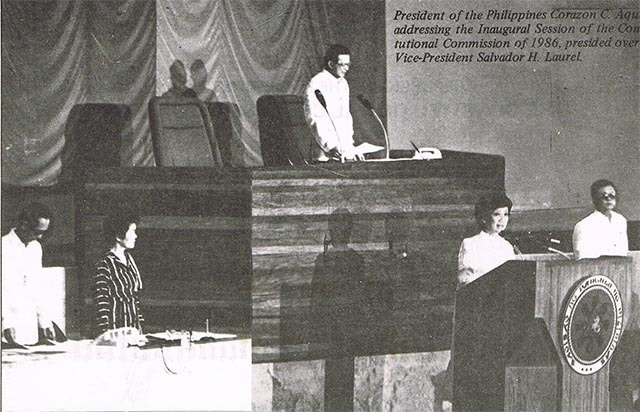Martial Law in the New Constitution
In today’s 1987 Constitution, guarding against future attempts to replicate Marcos’s gambit for power, a President is bound by the following provisions in declaring Martial Law.

The inaugural session of the 1986 Constitutional Commission. Photo from the Official Gazette
As Commander-in-Chief, he may call out the armed forces of the Philippines in cases of lawless violence, invasion, and rebellion. In case of invasion and rebellion, martial law may be declared in the country or a part of it, and the writ of habeas corpus may be suspended.
Both martial law and the suspension of the writ of habeas corpus may not exceed a period of sixty days. The writ suspension is not automatic under martial law. Moreover, the suspension only applies to those specifically charged with rebellion or invasion, and even with the suspension, the person arrested must be judicially charged within three days or else released.
Within forty-eight hours of the declaration, the President must submit a report to Congress. Congress must then vote jointly and decide by majority vote of all its members whether or not to revoke the President’s decision.
Upon the President’s initiative, Congress may also similarly extend the period of 60 days when necessary. The period of extension is determined by Congress.
Subject to filing by a citizen, the Supreme Court is also mandated to review whether there is sufficient factual basis to declare martial law. Within 30 days of filing, a decision must be promulgated.
All these measures ensure that the immense power of martial law cannot be abused by the President. With all these checks and balances, martial law can only be declared when there is sufficient factual basis to declare it, as competently reviewed by the Supreme Court. Moreover, additional specifics are laid out to protect citizens from abuse under the suspension of the writ of habeas corpus. Many of these additions reflect lessons directly learned from the period of Martial Law under Marcos.



